John Grigg Memorial
Samuel Hurst Seager
Charles Kidson
Type
- Sculpture
- Bas-relief
Medium
- Stone
Dimensions
- H2400 x W2520 x D2520mm

Samuel Hurst Seager and Charles Kidson, ‘John Grigg Memorial’ (1905), Whakatere Ashburton
Image: Bronwyn Holloway-Smith, Public Art Heritage Aotearoa New Zealand, Feb 2025
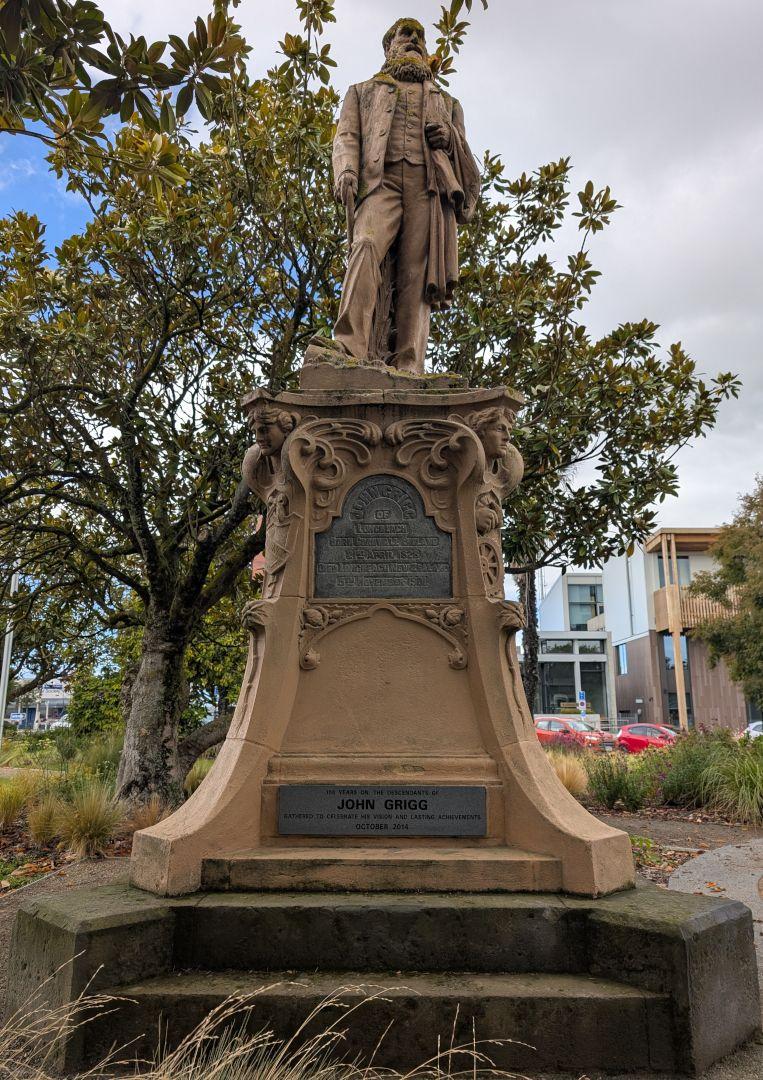
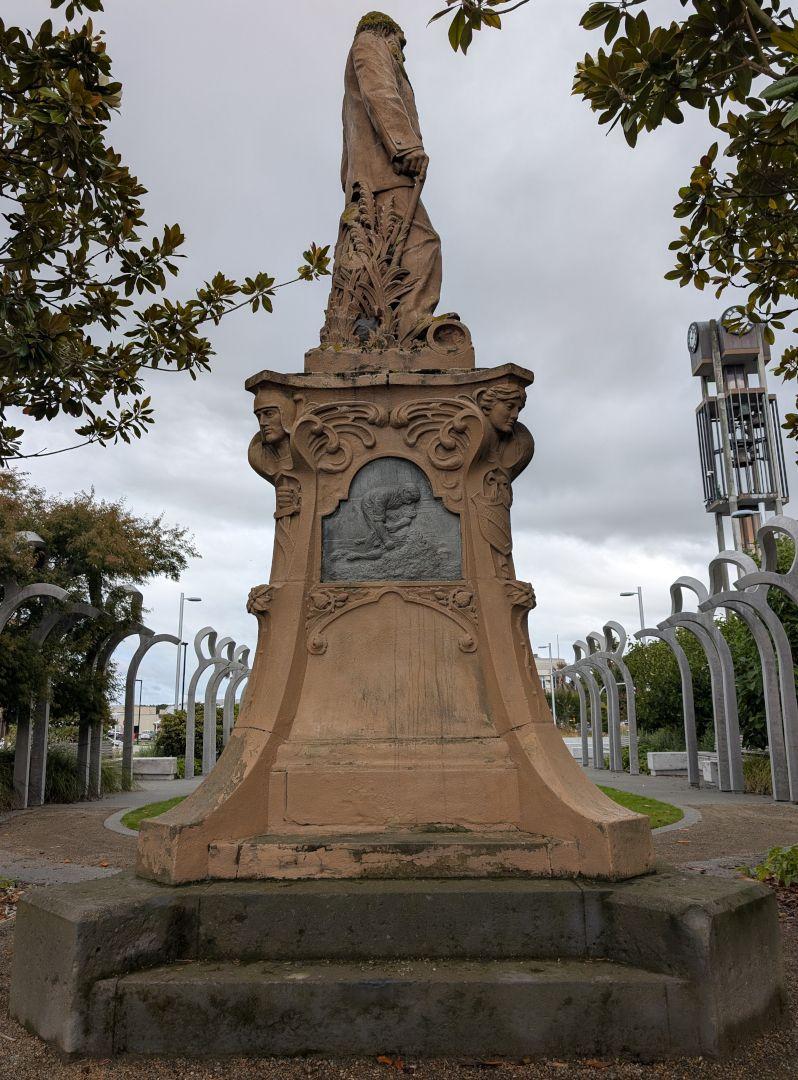
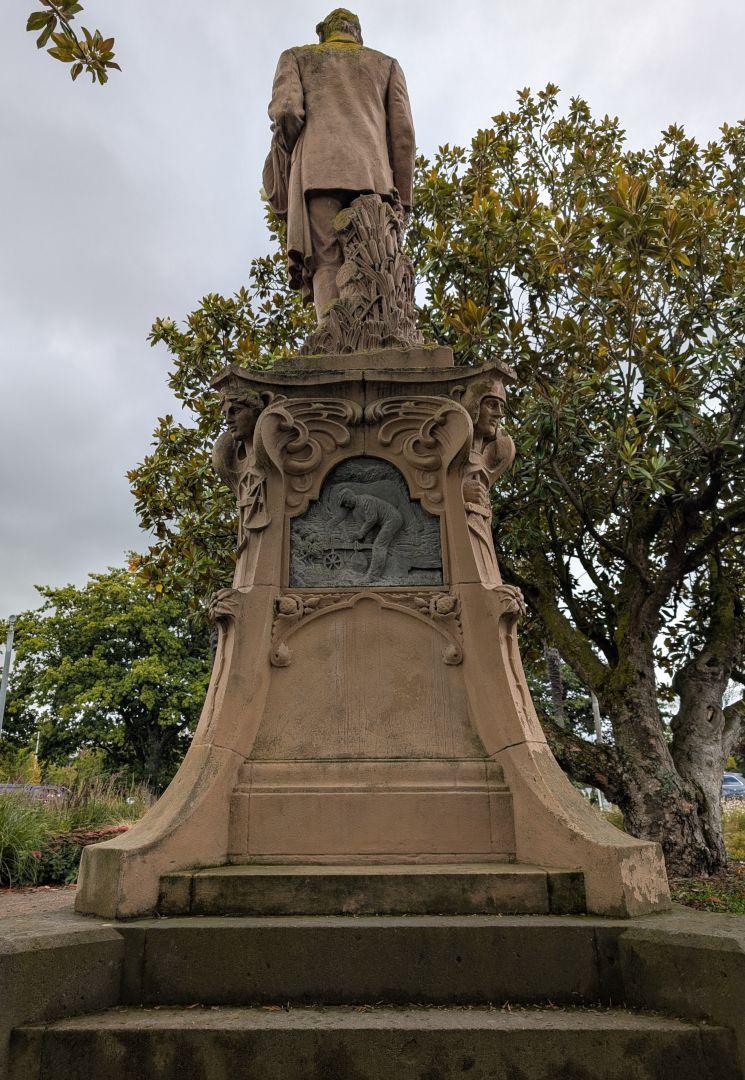
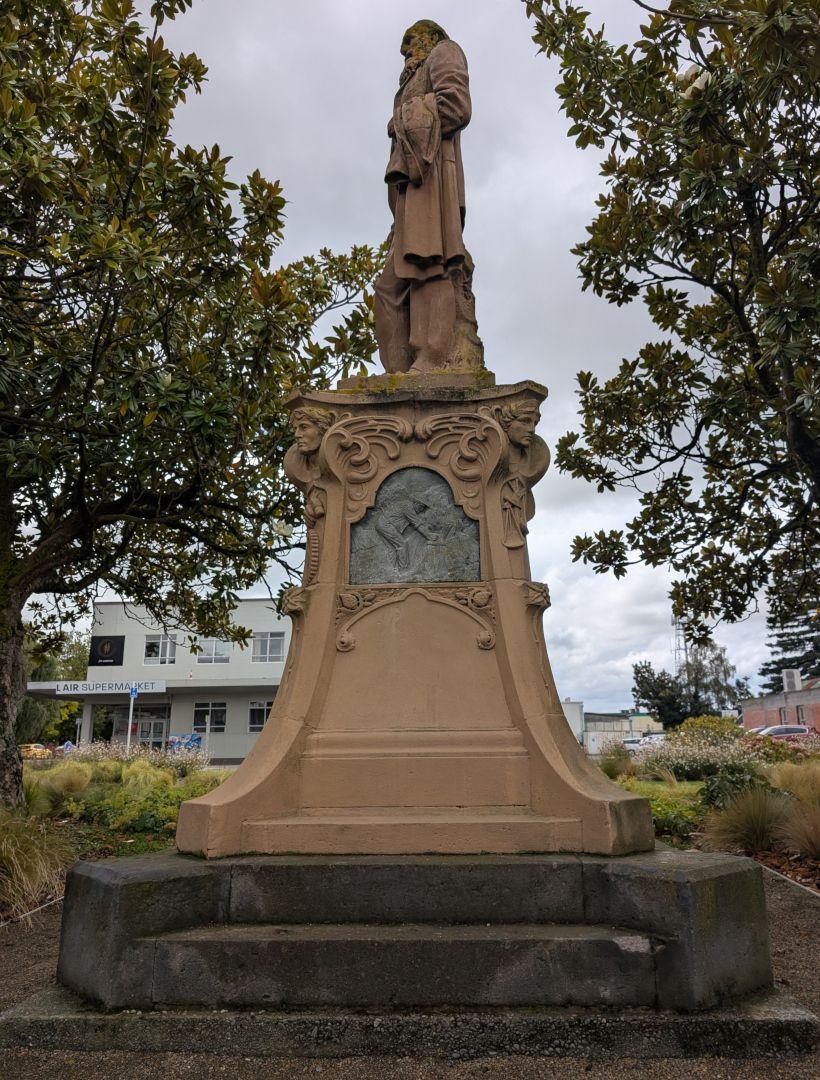
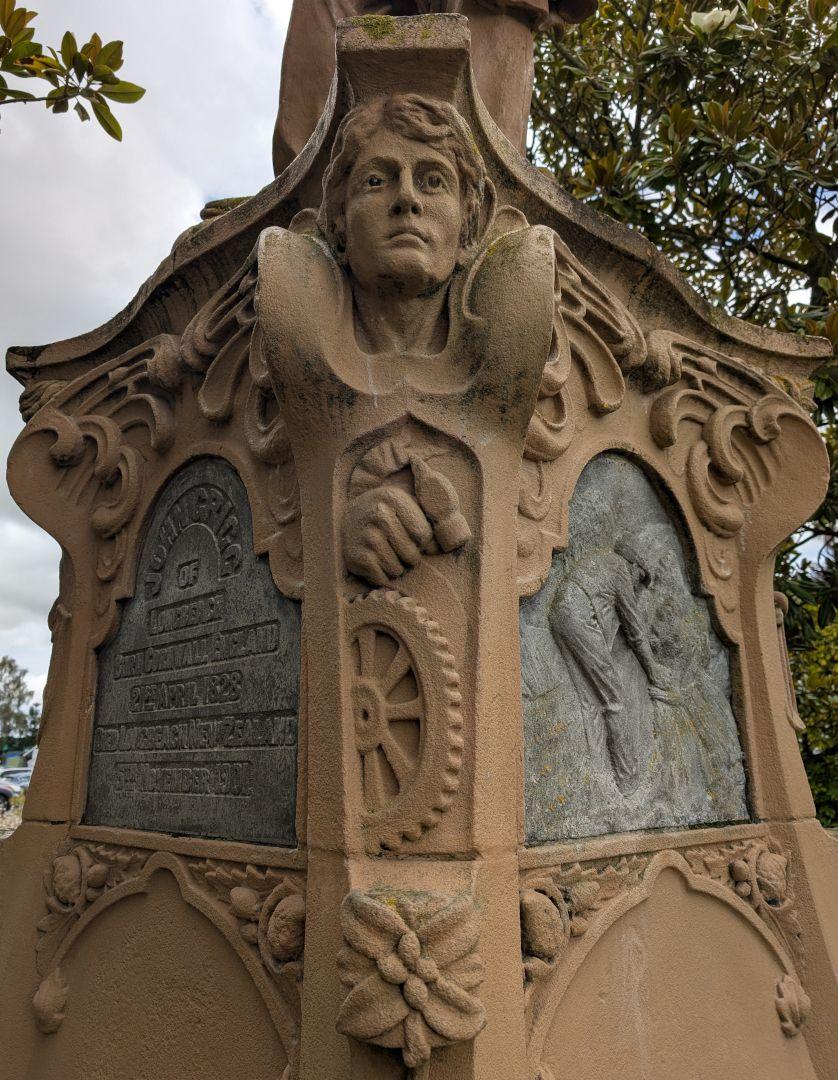
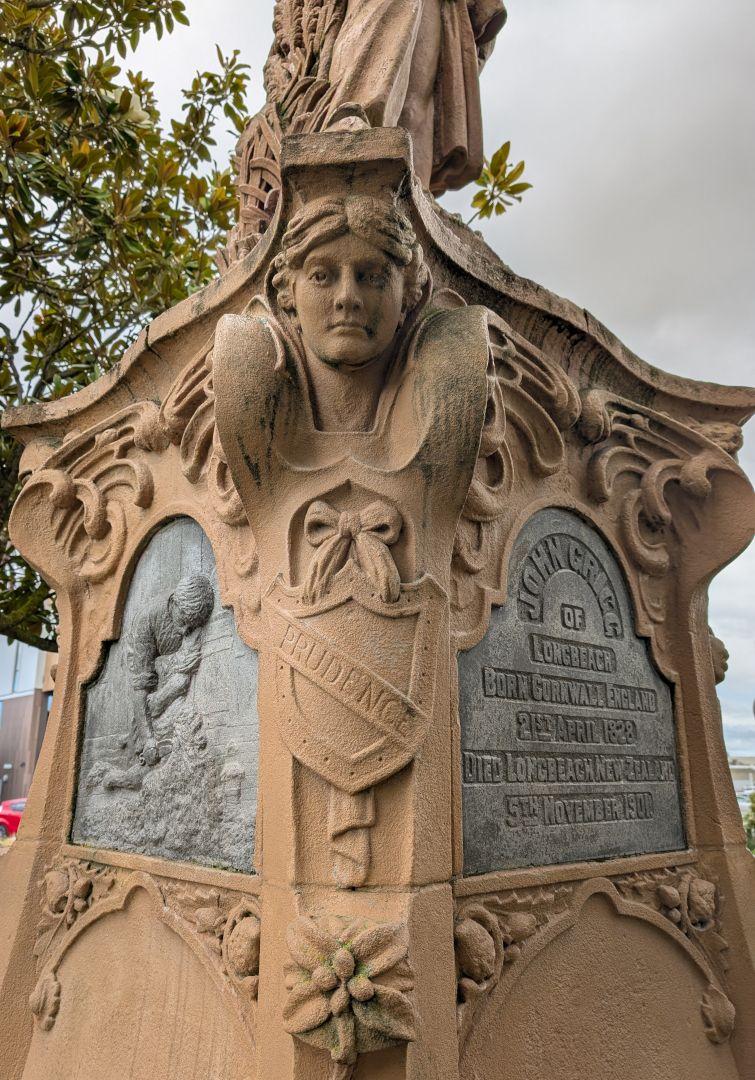
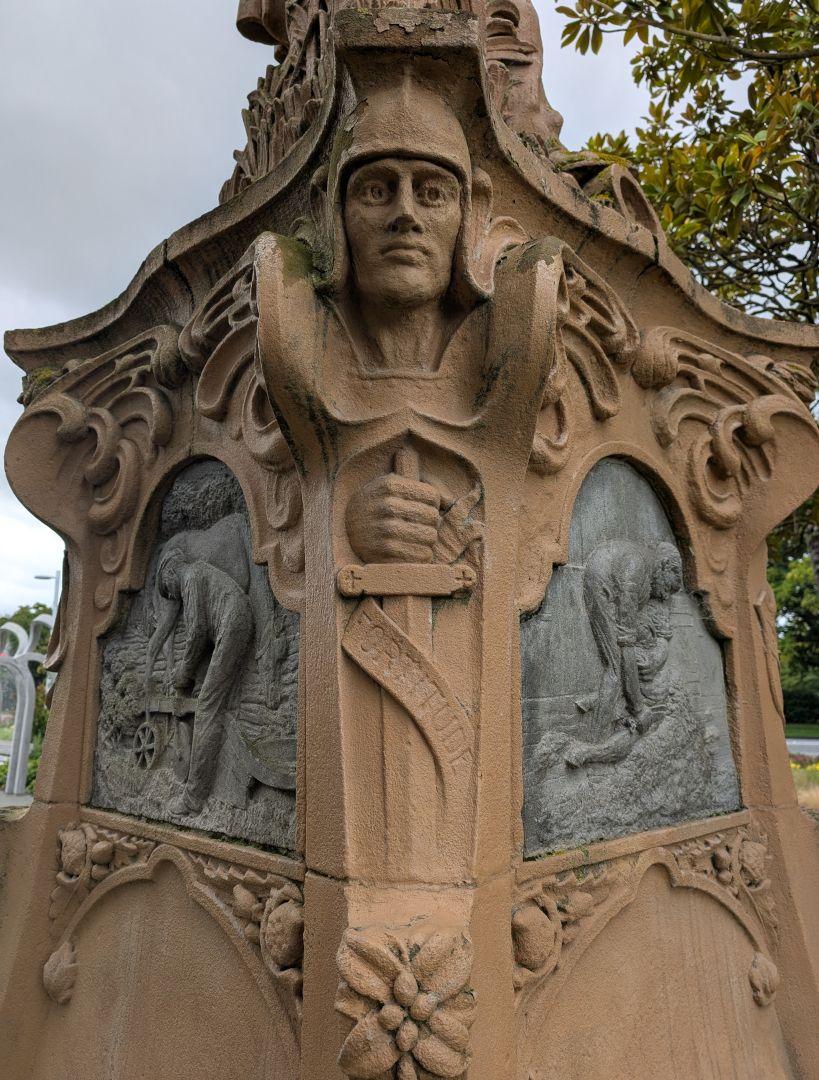
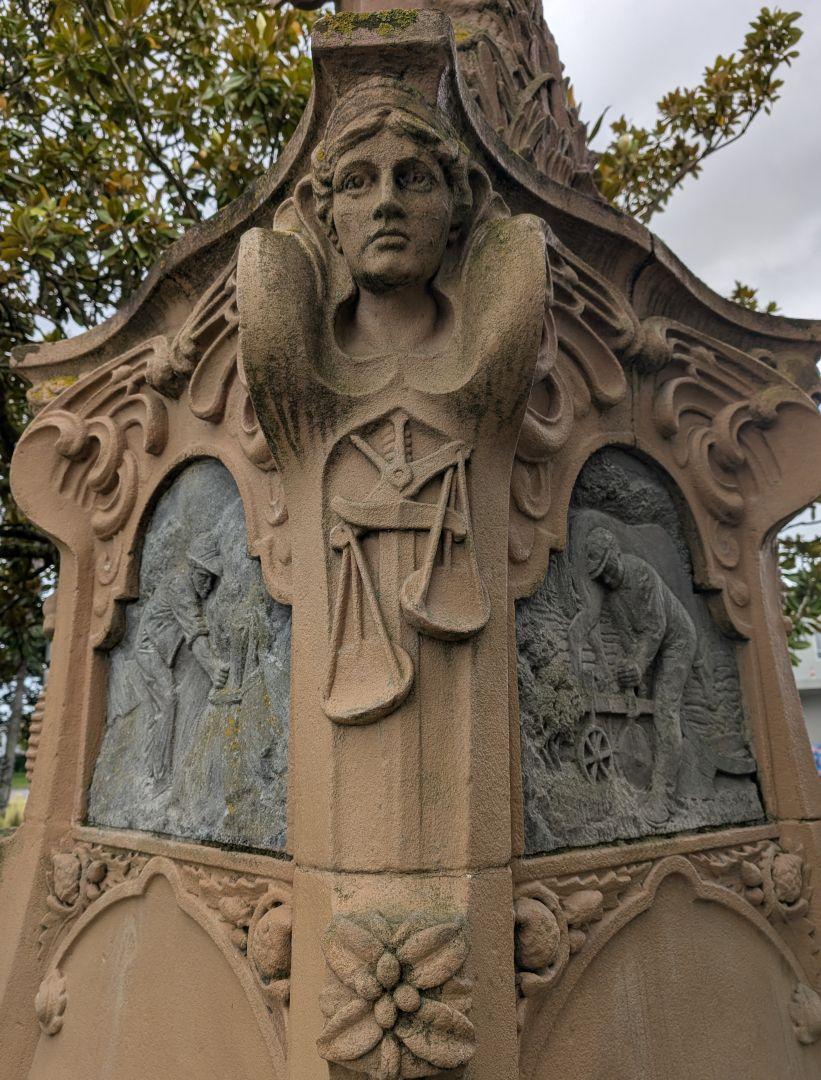
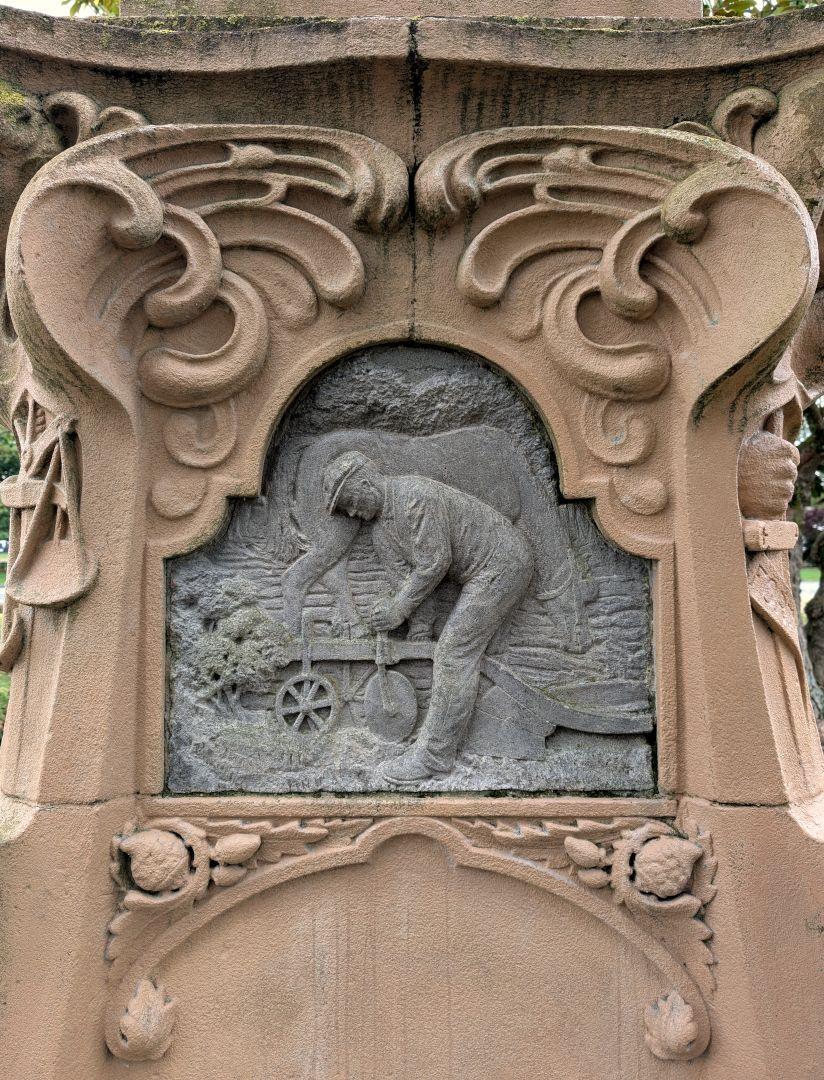
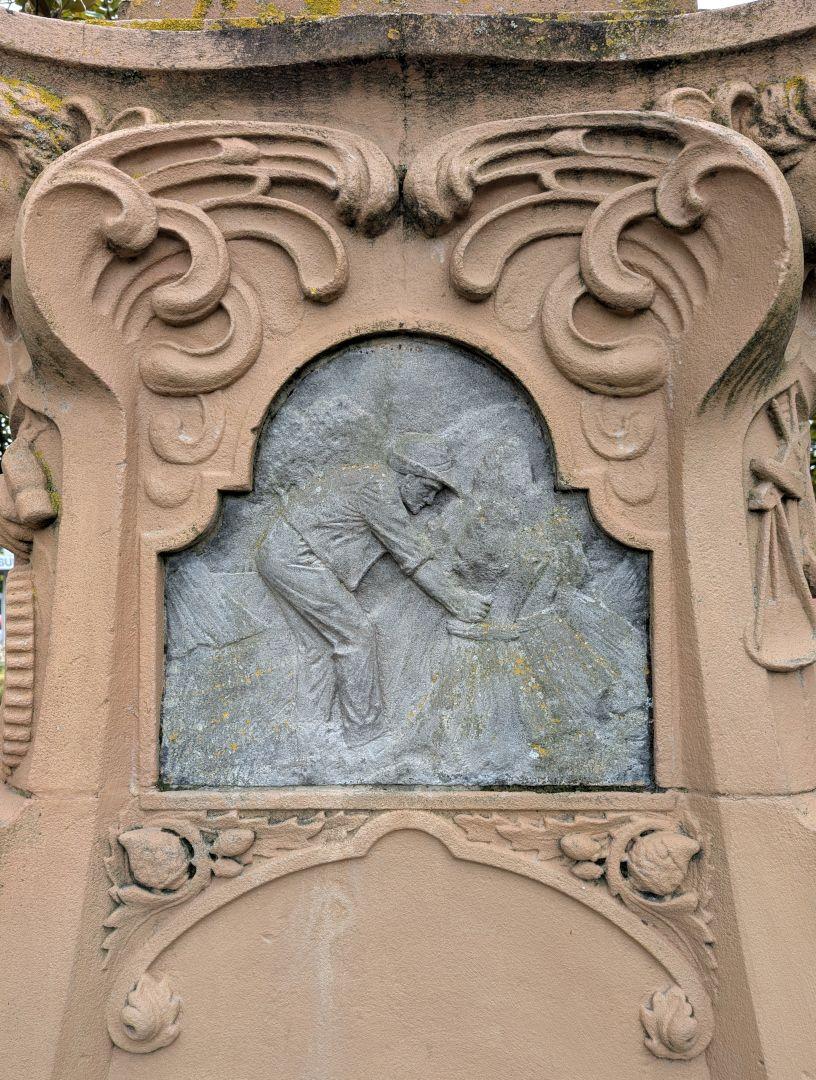
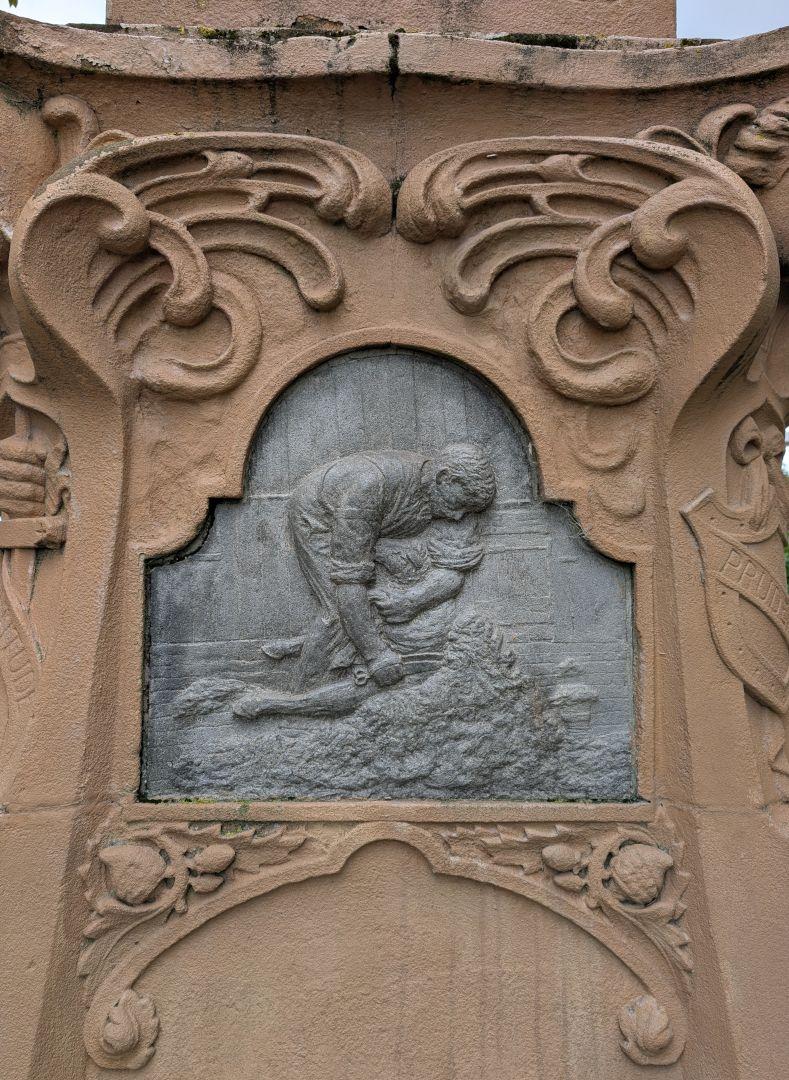
- DETAILS
- MAP
Description
As Neil Roberts records, the sculpture emerged after "a proposal was put forward to the Ashburton County Council and a public subscription list was begun by the citizens of Ashburton to raise the necessary funds for a memorial statue. Initially it had been thought that a prominent British sculptor might be commissioned but that was quickly found to be too costly and thoughts turned to finding someone locally.
“As a result Samuel Hurst Seager was approached and agreed to design the memorial. He in turn engaged Kidson to carry out the carving under his direction. The memorial design was dominated by the figure of Grigg standing bareheaded, a coat over his arm and a stick in his hand with raupo reeds and drainpipes beneath his feet. The four corner buttresses supporting the base of the statue represented the four virtues, Industry, Prudence, Fortitude and Justice and on the plinth of the statue three bas-relief panels depicting the farming pursuits of ploughing, harvesting, and shearing. A fourth panel bore an inscription.
“This was to be the major project to occupy much of Kidson's spare time during 1905. By March he had prepared a model of the memorial and had begun working on the relief panels. Both the model and the relief panel 'shearing' were exhibited at the Canterbury Society of Arts in April. Most of the memorial was eventually sculpted from Sydney sandstone with the relief panels cut from grey Westland sandstone which Kidson worked on at his Cashmere studio.
“In 1957 George Fraser recalled how the image for one of the relief panels came about: "one of the reliefs for this work, Harvesting, was modelled from a photograph I took of Charles Kidson in a field of stooks on the east side of Colombo Street at the foot of Dyers Pass Road." He also had recollections of the sculpting of the 2.4 metre statue of Grigg; "I have a vivid impression of seeing him chiseling the main figure and using a pointing machine in the studio at the bottom of his garden".
“By the end of September 1905 most of Kidson's work for the memorial was finished and the contractors, Graham and Greig, began its construction in Baring Square. When finished, the memorial stood 6 metres high and had cost £720. At its unveiling on Anniversary Day 16 December, speakers eulogised about Grigg but also paid compliments to the designer and sculptor who had made what was declared to be 'the first important piece of sculpture to have been made in Christchurch'. There was truth in that remark as up to that time all of Canterbury's public commemorative sculpture had been designed and sculpted in Britain. The success of this work and the collaboration with Seager had helped confirm Kidson's position among his contemporaries as Christchurch's leading sculptor and stood him in good stead for future public projects.”
Source: Neil Roberts, 'Canterbury Vignette Series: Charles Kidson : 1867 - 1908' (Robert McDougall Art Gallery: 2000), pp.14-15.
–
“This statue of pioneer settler John Grigg was unveiled in the centre of Ashburton on Canterbury anniversary day, 16 December 1905, four years after Grigg's death. The memorial was seen as a tribute to a pioneer who had transformed the swampy land around his property at Longbeach into a prosperous farm and had played a leading role in the export of frozen meat from Canterbury. Memorials to pioneers began to appear in small towns around New Zealand in the first decade of the 20th century.”
–
The monument is in two parts: a full-length standing portrait of the pioneer farmer, and a series of relief carvings of farming activities on the pedestal. Grigg is shown informally, holding a coat over his arm. The portrait is naturalistic, and the farming theme is carried through at the rear of the figure where sheaves of wheat help support the bas-relief image.
The base includes two plaques, that variously read:
“John Grigg / of / Longbeach / Born Cornwall England / 21st April 1828 / Died Longbeach New Zealand / 5th November 1901.”
“150 years on, the descendants of / John Grigg / gathered to celebrate his vision and lasting achievements / October 2014”
See also:
- Memorial to John Grigg, Ashburton (Te Ara: The Encyclopaedia of New Zealand)
- Source: Neil Roberts, 'Canterbury Vignette Series: Charles Kidson : 1867 - 1908' (Robert McDougall Art Gallery: 2000), pp.14-15.
